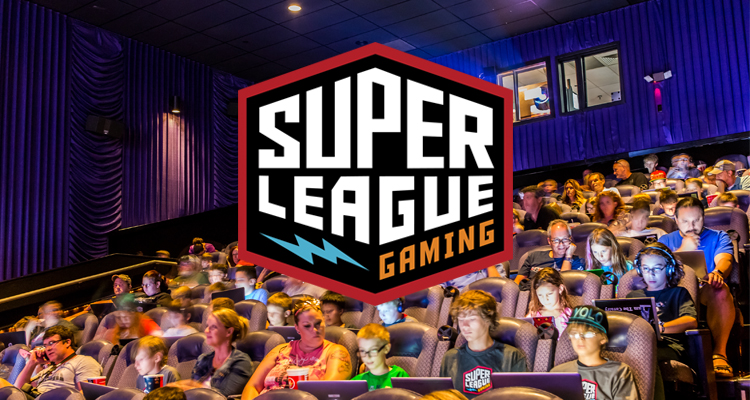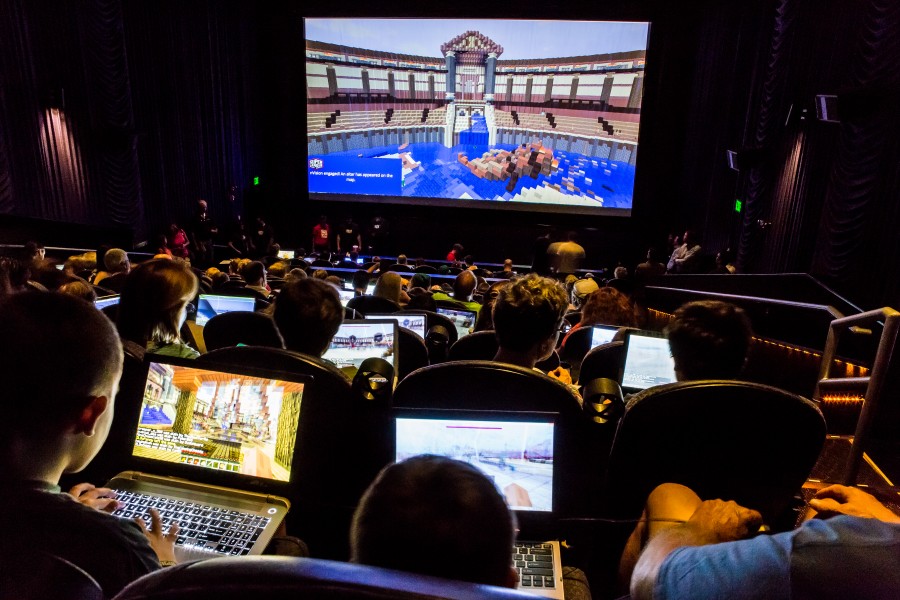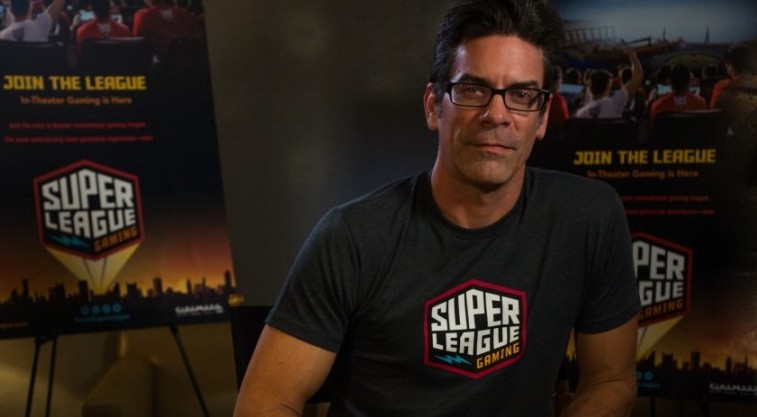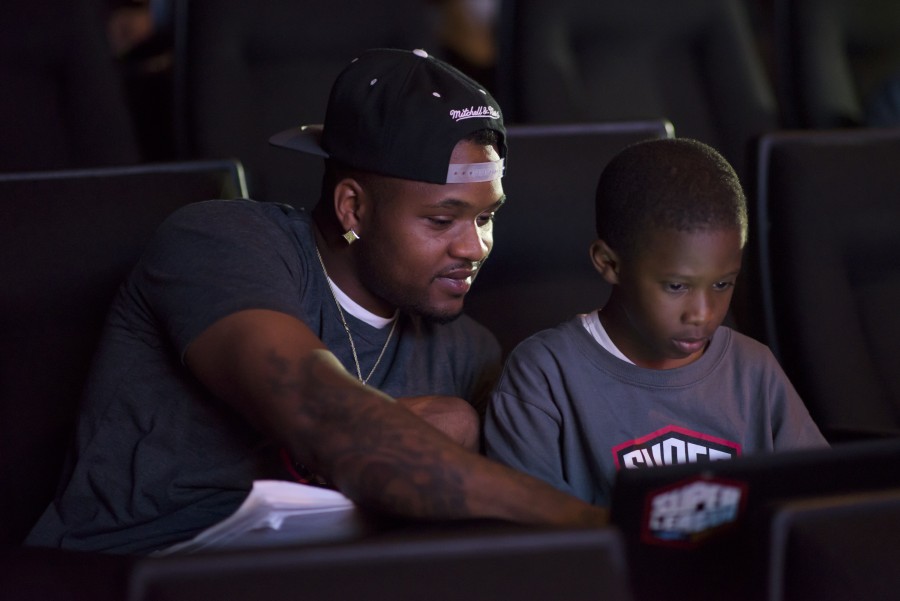If it hasn’t already, the creative building game Minecraft is likely on its way to a theater near you.
Minecraft Super League kicked off its first six-week season this week, taking over screens at 88 Regal, AMC, Cinemark, and iPic theaters in major cities for what it bills as the “best entertaining gameplay experience—ever.”
Minecraft’s popularity among kids and educators is undeniable. It’s been downloaded more than 100 million times, and Microsoft recently paid $2.5 billion to acquire its intellectual property rights from Sweden-based Mojang. Moreover, schools use the 3D building blocks to supplement lessons in history, science, math, and language arts.
But Super League Chief Operating Officer Brett Morris, 45, sees Super League as a break from the classroom—a way for school-aged, like-minded kids to have fun and socialize. He compares it in some ways to his youthful experiences in upstate New York, hanging out at an arcade.
“Those are some of my fondest memories,” says Morris, a Los Angeles-based digital media consultant who has worked with Shark Tank investor Mark Cuban and previously provided marketing services for brands including Adidas, Yahoo, and Microsoft. “These days, there are a lot of gamer kids who don’t have a version of the arcade. They have no physical environment to interact with other kids. When considering the league, we realized that the perfect meeting place did exist, and it was today’s amazing movie theaters.
“Now, instead of kids playing at home, by themselves, they can come to the theater and play with 100 other kids in a fun, social environment. It’s kids interacting, face-to-face with each other, playing a game they love and taking advantage of the big movie screen.”
For a six-week fee of $80 (which includes a Super League T-shirt), participants bring their laptops and combine with teammates to battle other Minecraft gamers from their area in local tournaments. Although the program is geared to students ages 7 to 14, it is open to all ages. Teams of four to seven players can pre-register. Players who don’t have a team are matched by Super League with age-appropriate teammates. Parents of participants are admitted free to the theater as spectators and Super League employs several “Action Squad” members at each site to promote fun and to provide technical support and security.
Each week, the competition incorporates two phases: “Creative Building,” in which teams showcase their ability to produce the coolest project based on a weekly theme, and “Survival,” in which competitors make the most of their online supplies to withstand changing terrain, spawning monsters, and threats from other competitors.
“The creative phase requires super-critical thinking and it’s where a lot of collaboration between the team members takes place,” Morris says. “The competitors have a literally blank canvas to build any structure they want—everything from space ships to boats to cities, you name it. In Survival Mode, the kids are battling each other in a bunch of different environments. Some are modeled after a Hunger Games scenario; others are racing games. The player who survives the battle and is the ‘last man standing’ earns the most points.”
While competitors work on their own laptops, the theater’s big screen offers a bird’s eye view of the entire local tournament. Individual contributors earn points in each round and team points are accumulated throughout the season. Super League has posted a $5,000 scholarship for the top-ranking player in the nation and a $10,000 scholarship to be divided equally between members of the top-ranking team at the end of the six-week season.
Morris cites several reasons why he and his fellow investors (“We’re all dads who wanted to make gaming more social and communal for our own kids,” says co-founder John Miller) believe a Minecraft league will take off.
“It’s the world’s most popular game, with a built-in audience and a huge consumer base,” Morris says. “It also incorporates real interesting education elements.”
On the heels of multiple single-date trials in theaters this summer, Morris was anticipating huge turnout for the initial tournaments this week. One theater, the iPic in Pasadena, California, had been sold out two weeks in advance for the sessions which were to run from 4:30 to 6 PM. The Super League plans to add more theaters in new venues when it conducts its second tournament beginning the second week of January. Morris says the plan is also to add weekend dates to the calendar.
“During the summer, at our one-off events, I stood at the exit of the theaters,” Morris says. “I asked every kid I could if they had fun. You should have seen their faces light up. The hardest thing to do was getting them to leave the theater. I was thrilled to see how many made new friends, exchanged phone numbers, and got a chance just to hang out with kids they’d never played with before. To me, that was the most exciting thing.”
Is your child participating in the Minecraft Super League? If so, how did it go? Would you recommend it to other families? Please share your thoughts here on Learning Liftoff.
To find a session near you and learn how to sign up, visit the Super League Gaming website.
Images courtesy of Super League Gaming








































